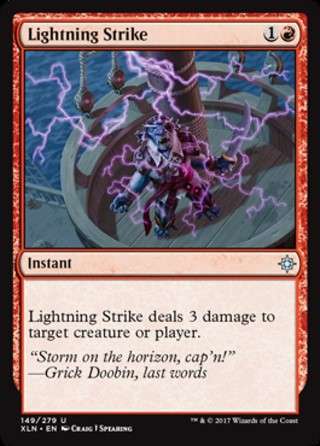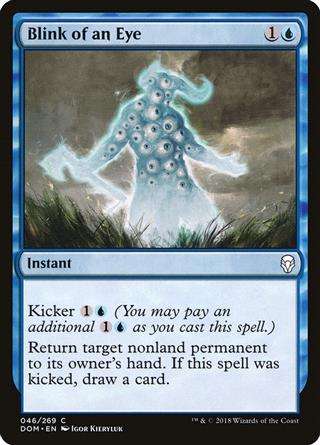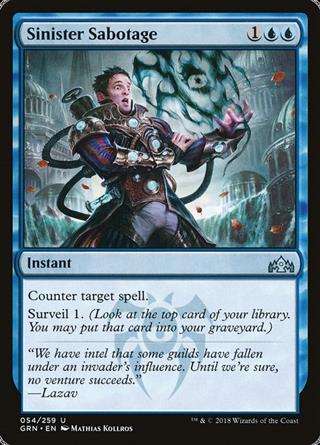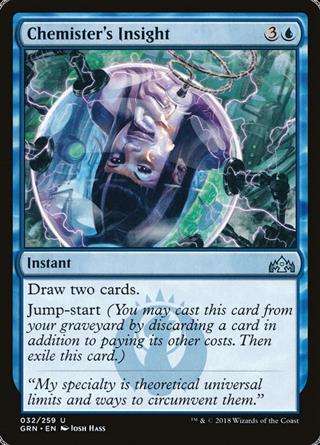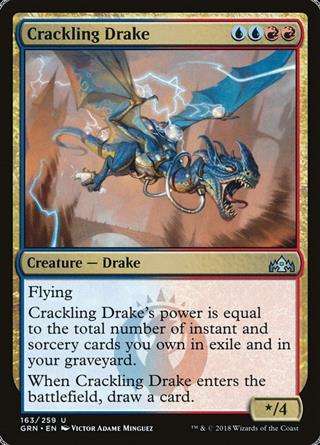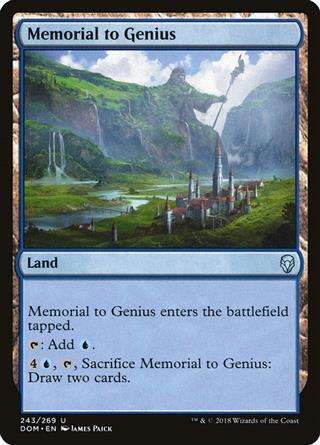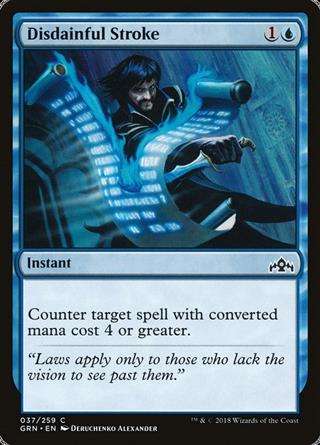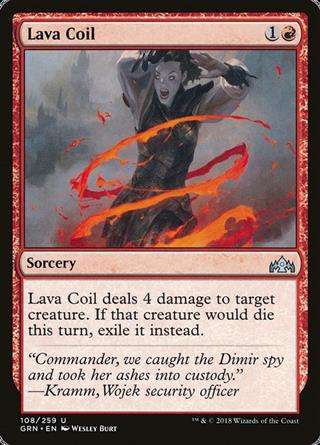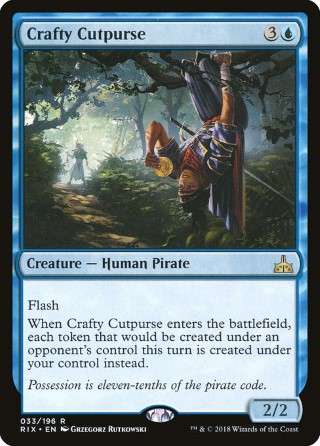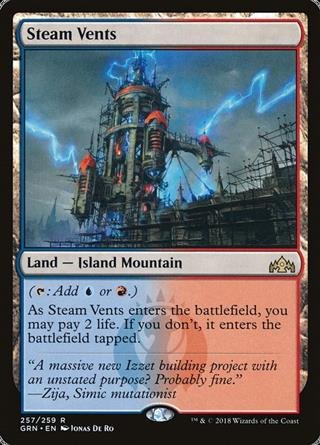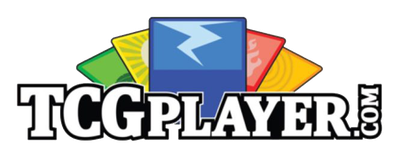Standard - 10-2 in CC Event Queues with U/R Control
- Deck contains 22 invalid cards for this format: Search for Azcanta // Azcanta, the Sunken Ruin (XLN), Lightning Strike (XLN), Fiery Cannonade (XLN), Memorial to Genius (DOM), Sulfur Falls (DOM), Blink of an Eye (DOM), Syncopate (DOM), Shivan Fire (DOM), Ral, Izzet Viceroy (GRN), Beacon Bolt (GRN), Crackling Drake (GRN), Steam Vents (GRN), Expansion // Explosion (GRN), Dream Eater (GRN), Sinister Sabotage (GRN), Chemister's Insight (GRN), Sentinel Totem (XLN), Crafty Cutpurse (RIX), Shivan Fire (DOM), Beacon Bolt (GRN), Disdainful Stroke (GRN), Lava Coil (GRN)
Main 60 cards (21 distinct)
| Creature (4) | |||
|---|---|---|---|
| $0.45€0.510.02 | |||
| $0.25€0.210.03 | |||
| Planeswalker (2) | |||
| $0.85€0.550.02 | |||
| Instant, Sorcery, Enchantment, Artifact (29) | |||
| $0.25€0.170.03 | |||
| $0.19€0.060.03 | |||
| $0.25€0.170.03 | |||
| $0.59€0.430.02 | |||
| $0.16€0.090.03 | |||
| $2.91€2.670.02 | |||
| $0.25€0.130.03 | |||
| $0.25€0.140.04 | |||
| $0.22€0.140.03 | |||
| $0.19€0.040.03 | |||
| $0.25€0.150.03 | |||
|
2
Opt
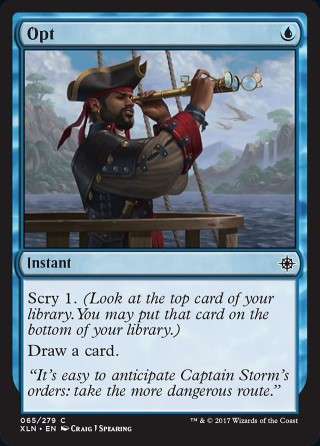
|
$0.25€0.110.03 | ||
| Land (25) | |||
| $12.39€11.970.96 | |||
| $0.20€0.100.03 | |||
| $1.00€0.750.02 | |||
|
6
Mountain
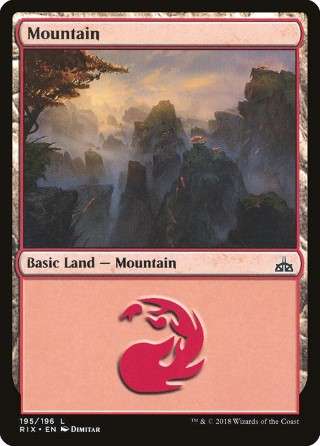
|
$1.76€0.090.04 | ||
|
8
Island

|
$0.79€0.070.03 | ||
| $0.21€0.140.03 | |||
Side 15 cards (7 distinct)
| $0.49€0.210.02 | |||
| $0.25€0.170.03 | |||
| $0.24€0.090.03 | |||
| $0.20€0.090.03 | |||
|
4
Negate
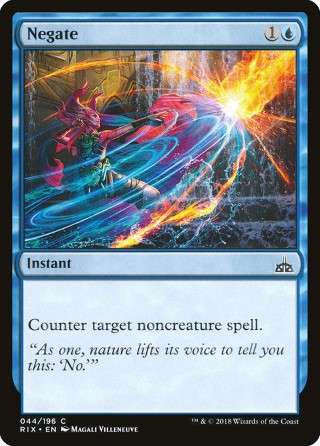
|
$0.25€0.120.03 | ||
| $0.16€0.090.03 | |||
| $0.24€0.070.03 |
(Simplified, true algorithm in MTGA not revealed by Wizards yet)
COMPARE WITH AETHERHUB COLLECTION
Add at least 100 different cards to your collection and set it as your Compare Collection on the manage page to see what cards from this deck you are missing.
COMPARE WITH MTG ARENA COLLECTION
Compare your MTG Arena Collection with AetherHub decklists or any other decks found on the web with the MTGA Assistant extension. Syncing your account will automatically upload your collection so you can see what cards you are missing right here.
Learn more Download For Windows
Continuing in his F2P-friendly series, JackischMTG takes on the control archetype with a spicy U/R Control build featuring Crackling Drake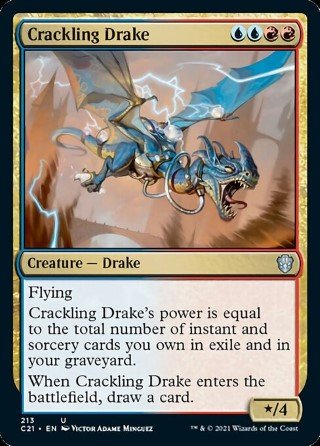 .
.
Before we dive in to today’s write-up - I want to make my typical shameless plug. I stream live on Twitch at https://www.twitch.tv/jackischmtg every Monday, Wednesday, and Friday, starting around 8:00 PM (EST). If you enjoy this deck and want to see more, or perhaps are struggling with the deck and need help, please come join me. I love helping new players, and would be more than willing to talk all things MTG with you. For those who learn new decks best by watching, you can see me go 5-1 in CC followed by another 5-1 run in the CC event queues here.
/end ShamelessPlug.exe
Hello and welcome back for part two of my F2P-friendly decks series! If you missed part one where I built a fun G/B Undergrowth midrange deck, you can check that out here. On today’s addition, I’m going to be taking a step back and making the article more “newbie-friendly” in addition to F2P friendly. If you feel like this article comes off as being too basic and you already know everything, I’m sorry. There will be future articles written just for you. Today is for the newbs <3. Now on with today’s write-up:
For those who don’t know, I LOVE control decks. There’s nothing more fun to me than trying to out-live and out-play whatever it is that my opponent is trying to do, AND THEN slamming your game winning threat to clean up the match. More experienced players might be familiar with this feeling, and specifically the phrase, “Turning the Corner”. If there’s one thing I want you to get out of this article, it’s the concept of a control deck “turning the corner” and how to maximise your opportunities to do so by being mindful of what you’re doing in the deck-building process.
So what is “Turning the Corner”? Simply put, a control deck “Turns the corner” against aggro and midrange decks on the turn in which the control player effectively puts a halt to the opponents game plan and gives him/herself the breathing room to further increase their card advantage or deploy a game-ending threat. This can take shape in several ways, but the most common scenarios include big board wipes (think Settle the Wreckage or Cleansing Nova
or Cleansing Nova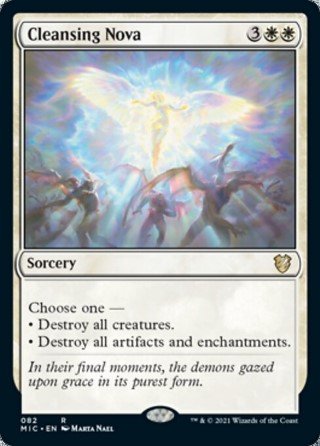 ), an opponent’s deck running out of steam by going 1 for 1 for too long, or by the control player getting to a point where he/she is consistently casting multiple advantage-influencing spells per turn. The first two are obvious - it’s this last one that isn’t, and we can often best accommodate it in building our decks with an appropriate mana curve for the strongest cards to satisfy the current meta.
), an opponent’s deck running out of steam by going 1 for 1 for too long, or by the control player getting to a point where he/she is consistently casting multiple advantage-influencing spells per turn. The first two are obvious - it’s this last one that isn’t, and we can often best accommodate it in building our decks with an appropriate mana curve for the strongest cards to satisfy the current meta.
So where or how do we start? Simply put, it’s all about the lands in the format. You may not realize it, but it is the standard-legal lands have the most influence on the game, even more so than the most powerful cards in the format. After all, it’s the lands that allow for consistency and utility, making it so that you have access to the best mix of the strongest and most diverse selection of tools to win the match. I don’t want to commit much more time to this idea in the article, so I’ll leave it at this. If you’re not yet convinced of my claim, or would simply like some follow-up reading on this topic, I’d strongly recommend you read what is probably the most useful MTG article ever written - Frank Karsten’s Mana Sources. I credit Frank’s article for providing me with an instant “level-up” in my deck-building skills all those years ago.
Assuming you are still on the same page, let’s break down our goals for our specific land base. We’re on a F2P-friendly version of U/R control, so we need to start off with some identification. Your first question should always be, “What is my most aggressively costed spell, and what do I need to support it with maximum consistency?” In today’s case, the most aggressively costed spell in blue is our Sinister Sabotage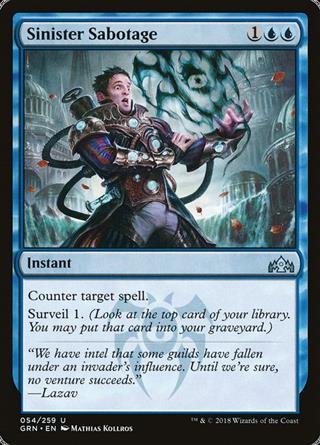 having double blue in it’s cost on turn 3, while Crackling Drake
having double blue in it’s cost on turn 3, while Crackling Drake takes that role for red with asking for double red on turn 4 (although it is frequently correct to not play on curve, we want to maximise our options). If we reference the article I linked above, this demands that our land base ideally contains 19 blue sources and 18 red sources. Of course, the 90% threshold that Frank Karsten uses is rather arbitrary and does not account for deck manipulation effects like Opt
takes that role for red with asking for double red on turn 4 (although it is frequently correct to not play on curve, we want to maximise our options). If we reference the article I linked above, this demands that our land base ideally contains 19 blue sources and 18 red sources. Of course, the 90% threshold that Frank Karsten uses is rather arbitrary and does not account for deck manipulation effects like Opt or Search for Azcanta // Azcanta, the Sunken Ruin
or Search for Azcanta // Azcanta, the Sunken Ruin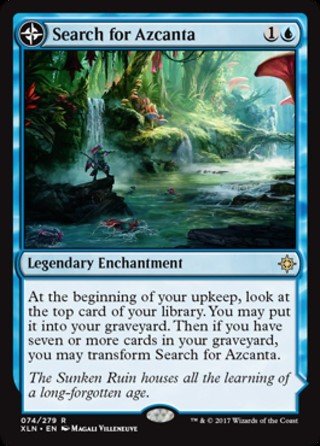 , but as he points out, it’s a nice level of consistency to aim for and have in a game that can have a considerable amount of variance.
, but as he points out, it’s a nice level of consistency to aim for and have in a game that can have a considerable amount of variance.
So with those targets in mind, I present both a rare-less mana base and a mana base with no rare limitations:
Rare-less: (25 lands) 18 Blue sources, 15 Red Sources (8 Mandatory ETB tapped)
10 Island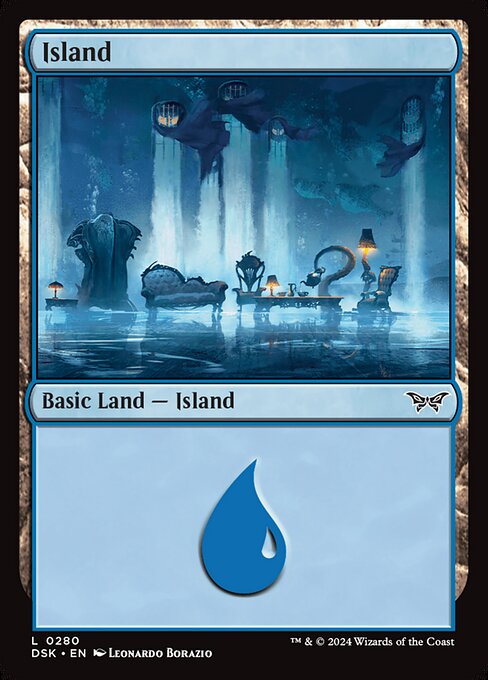
7 Mountain
No Limitations: (25 Lands) 19 Blue sources, 16 Red Sources (3 Mandatory ETB tapped)
8 Island
6 Mountain
Your first observation might be, “Why do we not run Highland Lake or that one-of Memorial to Genius
or that one-of Memorial to Genius in the rare-less build?” The answer is that while we care about maximizing our color sources, it does us no good if we consistently can’t play cards on curve when they might be needed. 8 ETB tapped lands is already arguably way too high, but we’re between a rock and a hard place with such strict limitations on our lands, so I’ve just made a judgement call here and we’ll have to deal with the consequences until we can unlock more of those rare dual lands.
in the rare-less build?” The answer is that while we care about maximizing our color sources, it does us no good if we consistently can’t play cards on curve when they might be needed. 8 ETB tapped lands is already arguably way too high, but we’re between a rock and a hard place with such strict limitations on our lands, so I’ve just made a judgement call here and we’ll have to deal with the consequences until we can unlock more of those rare dual lands.
Moving on to the limitation-less land base, you might ask - “Why Evolving Wilds over Izzet Guildgate
over Izzet Guildgate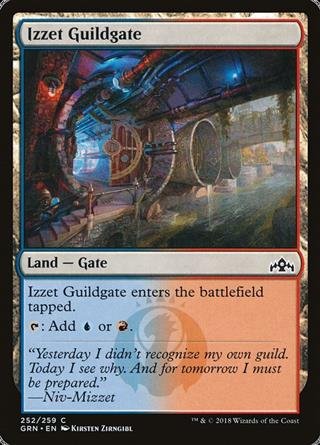 / Highland Lake
/ Highland Lake ?” Because functionally, Evolving Wilds still operates in practice as both both colors the majority of the time while providing us with a Mountain or and Island to increase the consistency of Sulfur Falls
?” Because functionally, Evolving Wilds still operates in practice as both both colors the majority of the time while providing us with a Mountain or and Island to increase the consistency of Sulfur Falls . Evolving Wilds also thins out the deck a bit, increasing the hit rate of spells vs lands later in the game, but that’s a very small edge. We care about Sulfur Falls more so.
. Evolving Wilds also thins out the deck a bit, increasing the hit rate of spells vs lands later in the game, but that’s a very small edge. We care about Sulfur Falls more so.
So now we’ve addressed the issue of the mana base in depth, let’s talk about the second factor I highlighted earlier: our CURVE. If you look over the list I present here, you’ll notice one thing in common with almost all of our “answers” to our opponents’ game plans. That is, they are all costed between 1 and 3 mana and are instant speed, while the majority of our threats and value generating cards cost 4+. Simply put, because this deck is trying to be the best it can be without too many rares, we need to lean rather heavily on being able to answer our opponent’s game plans as efficiently as possible. It’s rather common for control decks to start off on the back foot, so the sooner we can start casting 2 spells a turn, the easier it will be for us to turn the corner on our opponents in the mid-late game.
Are you still with me? Let’s get down to brass tacks and talk about how to play this deck specifically.
When playing most control decks, the best thing you can do is employ the “draw-go” plan. Basically, draw your card, make your land drop, and cast your spells on your opponent’s turns for the early-mid game. This deck is no exception, and will be exactly what we are doing, with the exception of casting Search for Azcanta // Azcanta, the Sunken Ruin as early as we we can get away with. The advantage in employing this strategy is that your opponent has to pilot their deck through a lot of nuance, uncertainty, and are forced to act first before you do. This also allows you to sometimes punish opponents for trying to play around counterspells by giving you room to cast Chemister's Insight
as early as we we can get away with. The advantage in employing this strategy is that your opponent has to pilot their deck through a lot of nuance, uncertainty, and are forced to act first before you do. This also allows you to sometimes punish opponents for trying to play around counterspells by giving you room to cast Chemister's Insight or activate flipped Azcanta on their end step with unused mana.
or activate flipped Azcanta on their end step with unused mana.
Moving in to the mid-game, our first tough decision point is whether or not to play Crackling Drake on curve. This often works out to be quite match-up dependent, with it being correct a lot of the time against aggro, while incorrect most of the time against midrange and control. Against the latter 2, it is typically correct to hold off on deploying the drakes as long as possible,waiting for you or your opponent to run out of steam, or to wait for an opening that your opponent provided to you such as when a control deck is tapped out.
on curve. This often works out to be quite match-up dependent, with it being correct a lot of the time against aggro, while incorrect most of the time against midrange and control. Against the latter 2, it is typically correct to hold off on deploying the drakes as long as possible,waiting for you or your opponent to run out of steam, or to wait for an opening that your opponent provided to you such as when a control deck is tapped out.
Moving up the curve, we have 2x Ral, Izzet Viceroy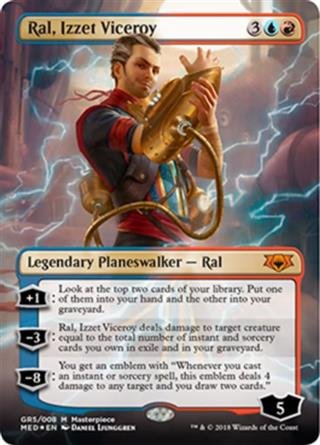 , 1x Dream Eater
, 1x Dream Eater , and Expansion // Explosion
, and Expansion // Explosion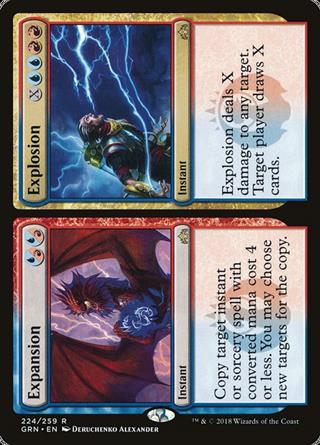 . These numbers are admittedly low, but are that way because of my insistence on reducing the number of rares and mythic rares in the deck. My last F2P-friendly list had 3 mythic rares, and so I’ve decided to stay consistent with that here. As you gain more of a collection and wildcards to spend, feel free to cut some number of Crackling Drake
. These numbers are admittedly low, but are that way because of my insistence on reducing the number of rares and mythic rares in the deck. My last F2P-friendly list had 3 mythic rares, and so I’ve decided to stay consistent with that here. As you gain more of a collection and wildcards to spend, feel free to cut some number of Crackling Drake for more Ral, Dream Eaters, or even Niv-Mizzet, Parun
for more Ral, Dream Eaters, or even Niv-Mizzet, Parun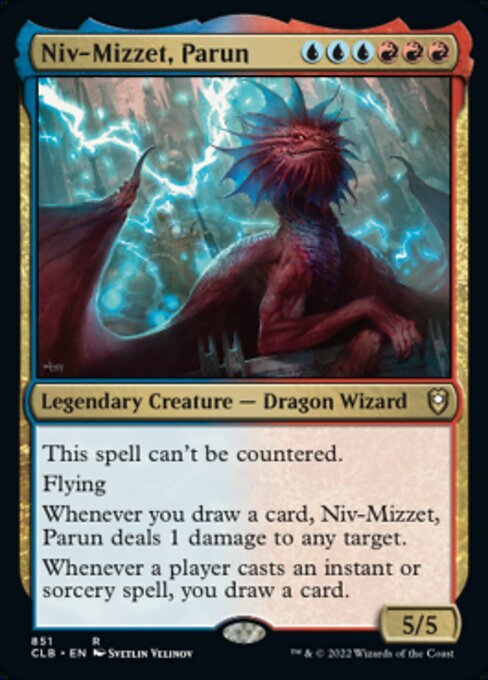 .
.
Ral, Izzet Viceroy is very similar to Teferi, Hero of Dominaria
is very similar to Teferi, Hero of Dominaria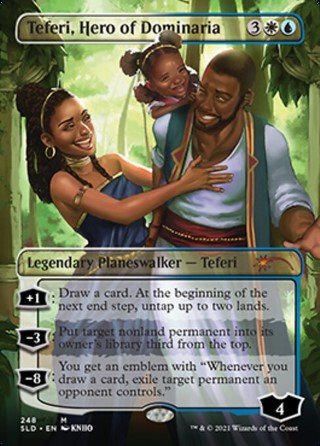 in that he’s best played either on curve or when you have enough mana to both cast him and have counterspell back-up to protect him from your opponent’s removal (we’re looking at you, Vraska's Contempt
in that he’s best played either on curve or when you have enough mana to both cast him and have counterspell back-up to protect him from your opponent’s removal (we’re looking at you, Vraska's Contempt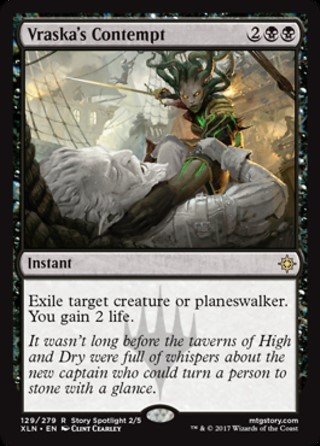 and Assassin's Trophy
and Assassin's Trophy ). If you opponent has a single, decent sized threat on the board, it is usually wise to go ahead and remove it with the minus 3 ability. Otherwise, just keep ticking up on Ral to generate as much card advantage as possible.
). If you opponent has a single, decent sized threat on the board, it is usually wise to go ahead and remove it with the minus 3 ability. Otherwise, just keep ticking up on Ral to generate as much card advantage as possible.
Now, Dream Eater , he’s no Torrential Gearhulk
, he’s no Torrential Gearhulk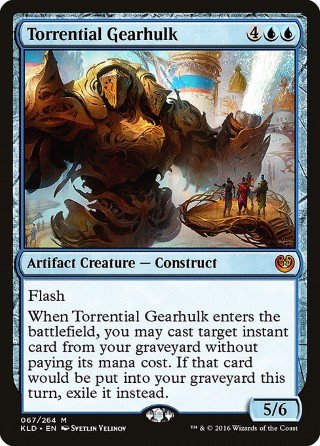 , but let me tell you that this card is actually quite good and provides a significant amount of utility with it’s ETB effect. Dream Eater on your opponent’s end step is where you’re going to be casting it a lot of the time, particularly after they’ve tapped out for a huge threat. This is where Dream Eater shines the most, almost Time Walk
, but let me tell you that this card is actually quite good and provides a significant amount of utility with it’s ETB effect. Dream Eater on your opponent’s end step is where you’re going to be casting it a lot of the time, particularly after they’ve tapped out for a huge threat. This is where Dream Eater shines the most, almost Time Walk -ing your opponent while allowing you to stack the top of your deck for needed answers / protection. I don’t think I’d ever want to run more than 2 copies, though.
-ing your opponent while allowing you to stack the top of your deck for needed answers / protection. I don’t think I’d ever want to run more than 2 copies, though.
Finally, Expansion // Explosion . Sphinx's Revelation
. Sphinx's Revelation , this is not. But do we need to have the power level of one of the most powerful cards to ever grace standard tournament tables for it to be playable? No. In fact, there is a very real possibility that Expansion // Explosion is BETTER than Sphinx’s Revelation strictly in the control mirror. The expansion half provides so much utility to that match-up, as often times victory comes down to an insane counter war of Negate
, this is not. But do we need to have the power level of one of the most powerful cards to ever grace standard tournament tables for it to be playable? No. In fact, there is a very real possibility that Expansion // Explosion is BETTER than Sphinx’s Revelation strictly in the control mirror. The expansion half provides so much utility to that match-up, as often times victory comes down to an insane counter war of Negate , Sinister Sabotage
, Sinister Sabotage , Ionize
, Ionize . Being able to copy a counter spell for double red is potentially a game changer in that match-up specifically. Don’t forget, you can also copy your opponent’s black colored hand disruption, such as duress and erasure. For the reasons I just pointed out, I’m currently feeling like 2 main board and 1 or 2 sideboard copies is ideal. Of course, they are rares, so we are sticking with just 1 mainboard for the purposes of this article.
. Being able to copy a counter spell for double red is potentially a game changer in that match-up specifically. Don’t forget, you can also copy your opponent’s black colored hand disruption, such as duress and erasure. For the reasons I just pointed out, I’m currently feeling like 2 main board and 1 or 2 sideboard copies is ideal. Of course, they are rares, so we are sticking with just 1 mainboard for the purposes of this article.
Now let’s wrap this up by talking about one piece of tech that I’ve not yet mentioned here: Fiery Cannonade . While this might not seem right to you now, let me just assert that I’m predicting for Fiery Cannonade to be a must play over the coming weeks. There’s a little card that I’ll be writing about in a bonus article tomorrow that I expect to be everywhere VERY VERY soon, and Fiery Cannonade is a great answer in that match-up as well as the G/W tokens match-up. But I'm going to keep keep you in suspense about this mystery card, as it just so happens that this card fits perfectly into tomorrow's F2P-friendly aggro deck.
. While this might not seem right to you now, let me just assert that I’m predicting for Fiery Cannonade to be a must play over the coming weeks. There’s a little card that I’ll be writing about in a bonus article tomorrow that I expect to be everywhere VERY VERY soon, and Fiery Cannonade is a great answer in that match-up as well as the G/W tokens match-up. But I'm going to keep keep you in suspense about this mystery card, as it just so happens that this card fits perfectly into tomorrow's F2P-friendly aggro deck.
Until tomorrow,
-JackischMTG
Latest Articles
Login to comment
4 comments
| 12 | 20 | 11 | 3 | 0 |
|---|---|---|---|---|
| 8 | 5 | 2 | 0 | 0 |
| Symbols | Percentage | Lands |
|---|




